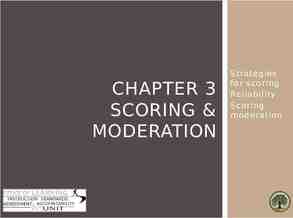Stacks and Queues
17 Slides706.00 KB
Stacks and Queues
What are stacks and queues? Stacks and Queues are classic linear data structures. A linear data structure organizes data in a linear fashion. Question: What is the most basic linear data structure we’ve used? Answer : An array. Stacks and queues differ from arrays in that they have restrictions on the way we put items in and take items out A stack is a last in, first out (LIFO) data structure Items are removed from a stack in the reverse order from the way they were inserted A queue is a first in, first out (FIFO) data structure Items are removed from a queue in the same order as they were inserted 2
Queues queue: A linear data structure that manages data in a first-in, first-out manner. Example: A waiting line for service at the book store. A customer enters the queue at the back and moves forward. front remove , peek Custom er 1 back Custom er 2 Custom er 3 add
Queues in Computer Science Operating systems: queue of print jobs to send to the printer queue of programs / processes to be run queue of network data packets to send Programming: modeling a line of customers or clients storing a queue of computations to be performed in order Real world examples: people on an escalator or waiting in a line cars at a gas station (or on an assembly line) 4
Basic Queue Operations add(obj) places a given object at the back of queue remove() removes an object from front of queue and returns it; throws a NoSuchElementException if queue is empty peek() returns front object from queue without removing it; returns null if queue is empty size() returns the number of objects in queue isEmpty() returns true if queue has no objects
Linked-list implementation of queues In a queue, insertions occur at the back of the list. Deletions occur at the front of the list. These operations can be easily implemented using a singly-linked list (SLL). You always need a pointer to the head of the list You can keep an additional pointer to the last item in the list. myQueue: last head 44 97 23 17 6
Adding a node to the Queue Node to add last first 44 97 23 17
Removing a node from the Queue last head 44 97 23 17 8
Programming with Queues using Java Collections Queues are naturally implemented as Linked Lists. When constructing a queue using Java Collections, you must use a new LinkedList object instead of a new Queue object. Queue Integer q new LinkedList Integer (); q.add(42); q.add(-3); q.add(17); // front [42, -3, 17] back System.out.println(q.remove()); // 42
Exercises Write a method stutter that accepts a queue of integers as a parameter and replaces every element of the queue with two copies of that element. front [1, 2, 3] back becomes front [1, 1, 2, 2, 3, 3] back Write a method mirror that accepts a queue of strings as a parameter and appends the queue's contents to itself in reverse order. front [a, b, c] back becomes front [a, b, c, c, b, a] back 10
Stacks stack: A linear collection of objects. A stack manages data in a last-in, first-out manner. Example: Given a stack of trays, trays can only be added to the top of the stack and retrieved from the top of the stack. pop, peek push Last-In, First-Out ("LIFO") Elements are stored in order of insertion. Do NOT think of them as having indexes. Client can only add/remove/examine the last element added (the "top"). top 3 2 bottom 1 stack 11
Linked-list implementation of stacks A singly-linked list (SLL) is an obvious method for implementing a stack. A top pointer of the list will point to the top (back) of the stack. pushing is inserting an element at the top of the list. Popping is removing an element from the top of the list Actions may only happen at the top of a stack. myStack top head 44 97 23 17
Stacks in computer science Programming languages and compilers: method calls are placed onto a stack (call push, return pop) compilers use stacks to evaluate expressions Matching up related pairs of things: find out whether a string is a palindrome examine a file to see if its braces { } match convert "infix" expressions to pre/postfix Sophisticated algorithms: searching through a maze with "backtracking" many programs use an "undo stack" of previous operations
Class Stack push(obj) Adds a given object to the top of stack pop() removes top object from stack and returns it; throws EmptyStackException if stack is empty peek() returns top object from stack without removing it; throws EmptyStackException if stack is empty size() returns number of objects in stack isEmpty() returns true if stack has no objects
Example Stack Code Implementation using Java Collections Stack String s new Stack String (); s.push("a"); s.push("b"); s.push("c"); // bottom ["a", "b", "c"] top System.out.println(s.pop()); // "c" 15
What is the following stack Logic Error? Problem: Suppose we're asked to write a method max that accepts a Stack of integers and returns the largest integer in the stack. // Assume the stack is not empty. public static void max(Stack Integer s) { int maxValue s.pop(); } while (!s.isEmpty()) { int next s.pop(); maxValue Math.max(maxValue, next); } return maxValue; The algorithm is correct, but what is wrong with the code? 16
Answer The code destroys the stack in figuring out its answer. To fix this, you must save and restore the stack's contents: public static void max(Stack Integer s) { Stack Integer backup new Stack Integer (); int maxValue s.pop(); backup.push(maxValue); while (!s.isEmpty()) { int next s.pop(); backup.push(next); maxValue Math.max(maxValue, next); } } while (!backup.isEmpty()) { s.push(backup.pop()); } return maxValue; // restore 17






















